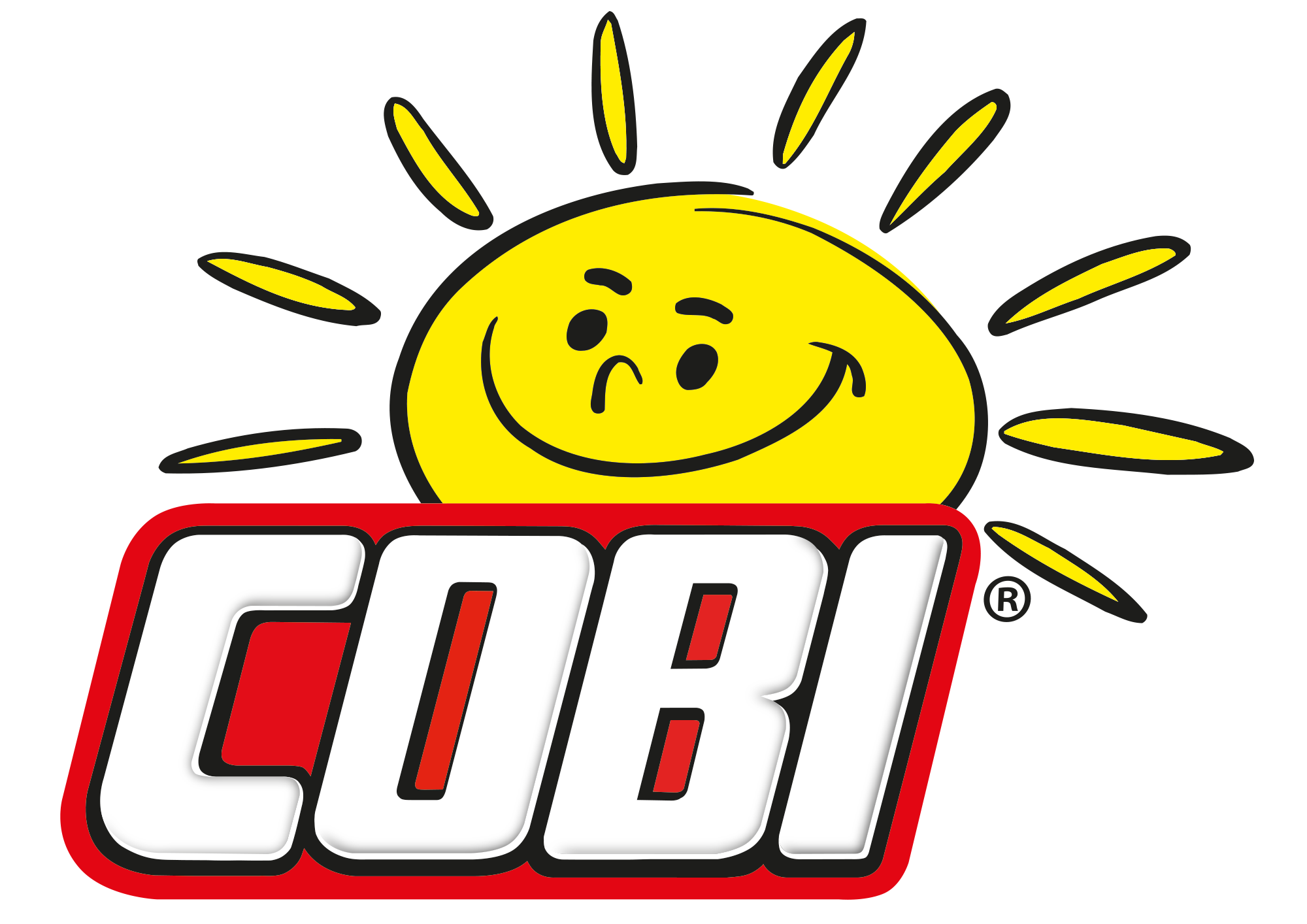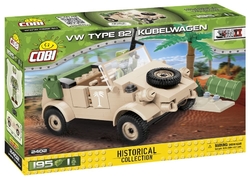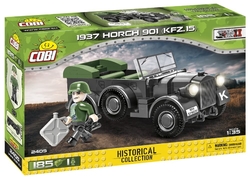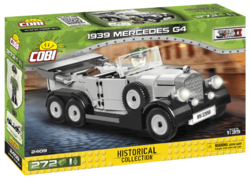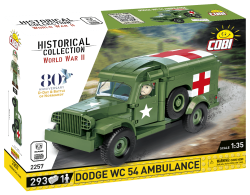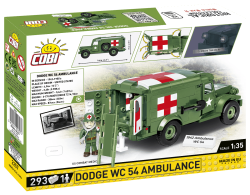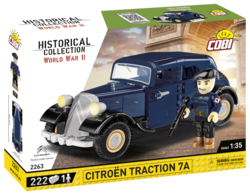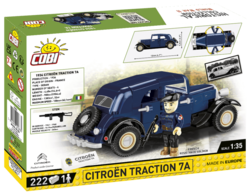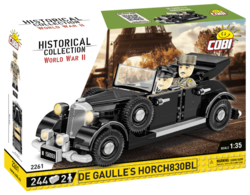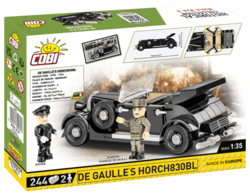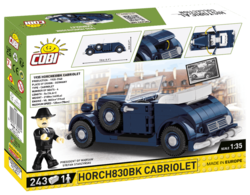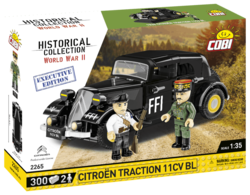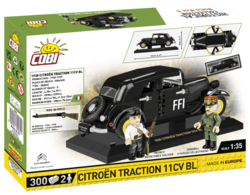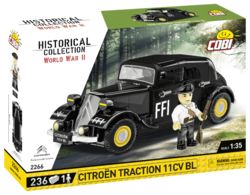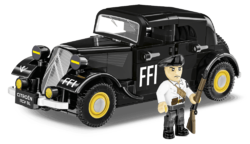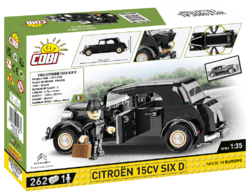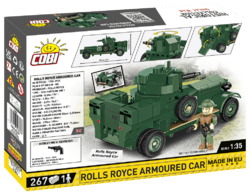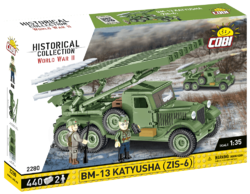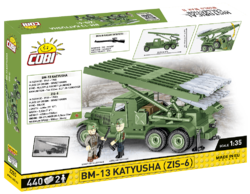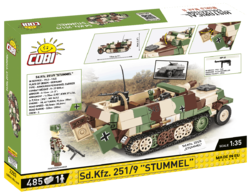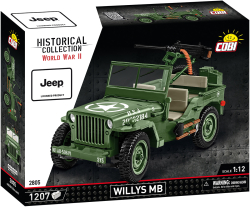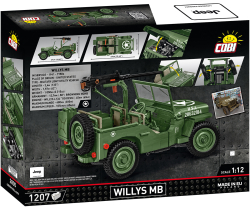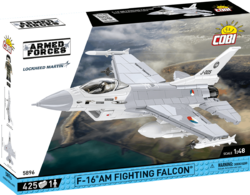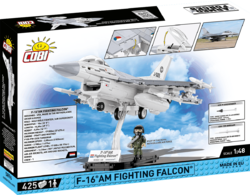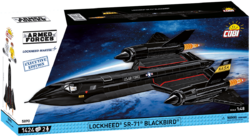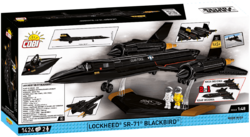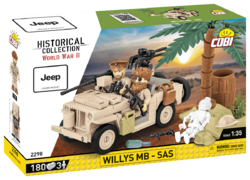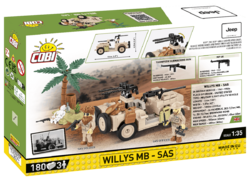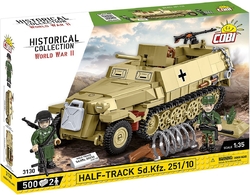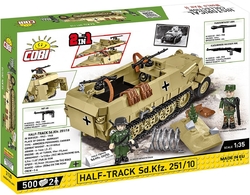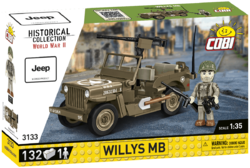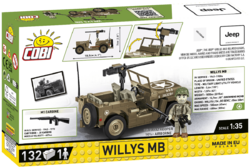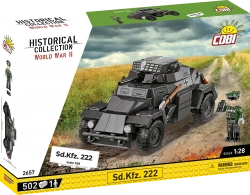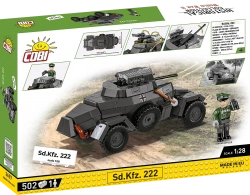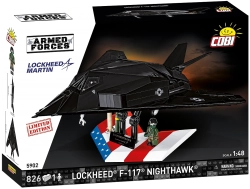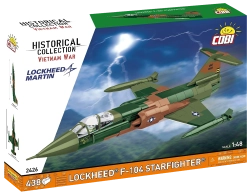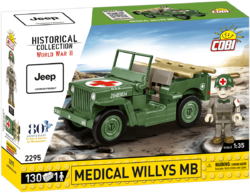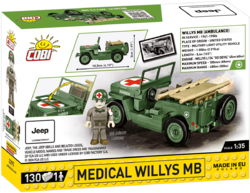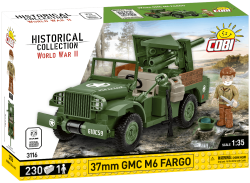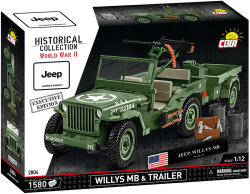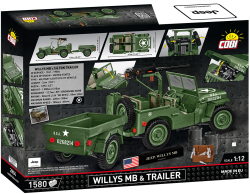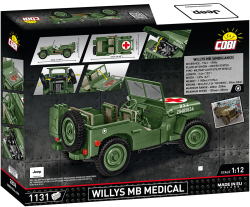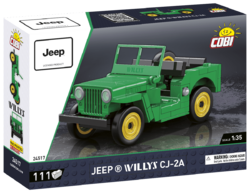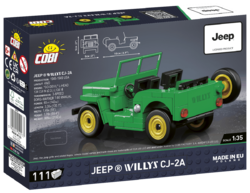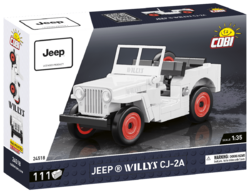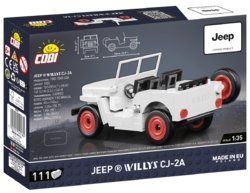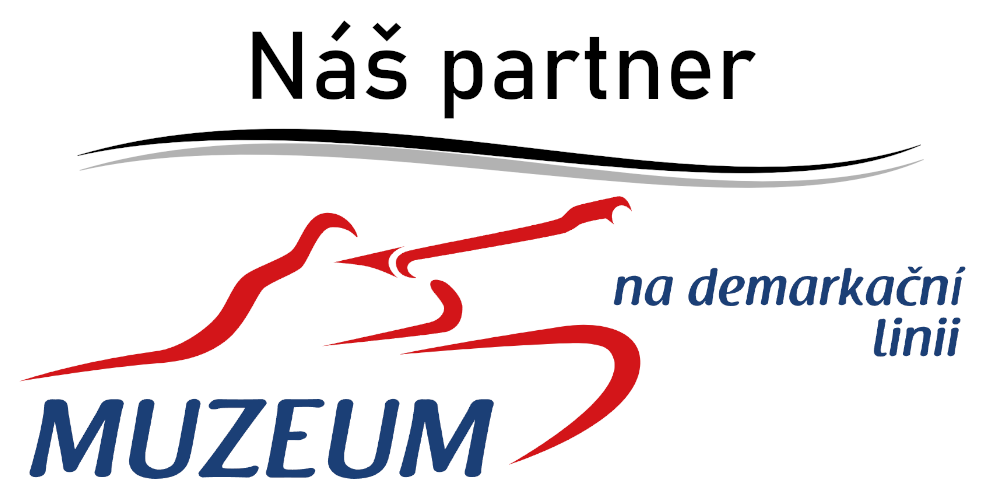Kit model of the legendary off-road utility vehicle developed for the US military Willys MB 4x4 in green camouflage with a Browning machine gun mounted on a swivel stand. The model has a folding windshield frame, a rescue shovel in a handle on the left side and a spare wheel at the rear of the car. The package includes a figure of an American soldier from the 101st Airborne Division. The kit is produced under the official license of Jeep.
Show more
100 %
(1 Ranking)
397 Kč
pcs
Add to Cart
In stock - ready to ship (2 pcs)
| List Number: | COBI-2296 |
| EAN: | 5902251022969 |
| Warranty: | 24 months |
| Manufacturer: | COBI |
| Loyalty Points: | 3 |
| Price excluding VAT: | 328,06 Kč |
Latest reviews
All reviews
Verified customer
04.04.2025
V tomto meritku (v pomeru ke kostkam) udrzet takovou maketovost a presto funcknost jako hracky ... opravu klobouk dolu!
Deti jiste oceni ze panacek muze sedet, stat na korbe za kulometem a celni sklo je sklapeci.
Marking na kapote a po stranach davaji modelu verohodnost.
Description
Parametres
Files and Links
Discussion
Reviews1

You know that:
- In 1941, 3 companies, American Bantam, Willys-Overlan and Ford Motors, competed for a government contract for the US Army.
- The competition was eventually won by Willys Overland Motors Ltd. as they offered a price of only $739 and thus began the glorious era of the Jeep.
- The car's designer was Karl Probst, who came up with the basic concept and design in two days.
- Willys was able to begin mass production on the 73rd day after the project was approved. Such flexibility is unthinkable in today's automotive industry.
- While Willys was supplying cars to the US Army, American Bantam and Ford were receiving orders from the Soviet Union and Great Britain.
- The demand for off-road vehicles was so great that Willys' capacity was insufficient even after repeated increases, so some production was transferred to Ford's factories under the Ford GPW brand.
- The car's headlights could be swiveled towards the engine compartment for repairs.
- President Eisenhower once said , "it is one of the three weapons that decided the war in favor of the U.S."
- In total, over 647,925 were produced in various versions.
- The United States delivered more than 75,000 vehicles to the Soviet Union.
Technical parameters:
- length 3.36 m, width 1.57 m, height with roof 1.77 m
- weight 1 050 kg
- power unit 4-cylinder petrol engine Willys L134 GO DEVIL with 45 kW
- number of gears 3 forward and 1 reverse + reduction
- fuel tank capacity 68 l
- range 480 km
- fuel consumption 14,1 l/100 km
- speed 105 km/h
- wading distance 0.53 m
- number of seats 1 + 1
- number of seats for patient transport 1-2
- main weapon 12.7 mm Browning M2HB machine gun
From the memoirs of Sergeant John Smith:
"Willys was my best friend at the front. He could get me anywhere, and he never let me down. Riding in him was exciting and liberating."
Assembly instructions
| Version (series) | 05/2024 |
|---|---|
| Number of figurines | 1 pcs |
| Scale | 1 : 35 |
| Dimensions after assembly | 10,5 x 7 cm |
| Number of pieces | 132 pcs |
| Box dimensions | 20 x 14 x 5 cm |
| Recommended age | 6+ |
| Material | Plastic |
| Collection | World War II |
| Compatible with other brand of kits | Yes |
| Contains luminous blocks | Yes |
Discussion is empty.
100 %
5
1x
4
0x
3
0x
2
0x
1
0x
V tomto meritku (v pomeru ke kostkam) udrzet takovou maketovost a presto funcknost jako hracky ... opravu klobouk dolu!
Deti jiste oceni ze panacek muze sedet, stat na korbe za kulometem a celni sklo je sklapeci.
Marking na kapote a po stranach davaji modelu verohodnost.


































